The most helpful trees for the best hedge – as decided by an expert
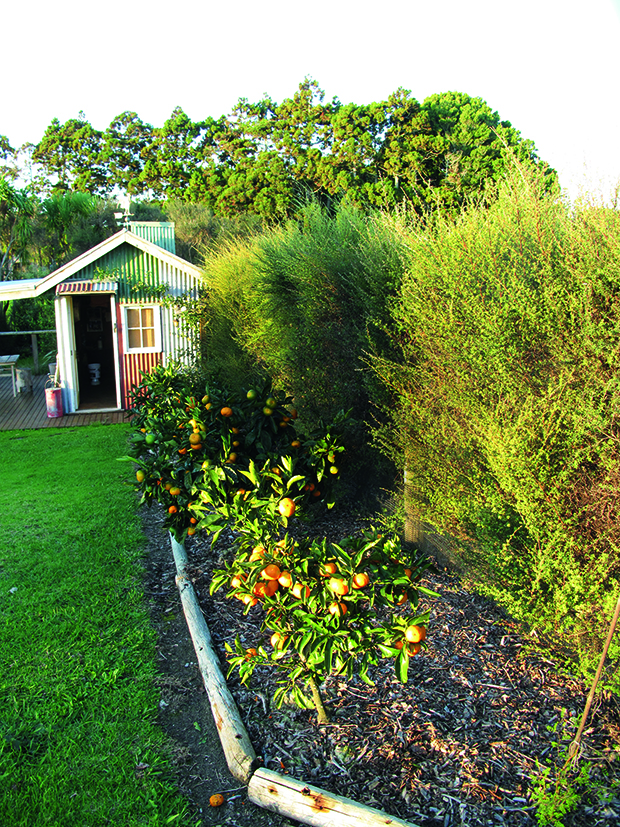
For shelter and privacy, you can’t go past a good hedge. But as Hel Loader writes, some trees are better suited to the task than others.
Words: Hel Loader
Who: Hel Loader
Land: 16 hectares
What: 3,000+ fruit and nut trees (predominantly walnuts, chestnuts, hazelnuts), plus free-range, nut-fed Berkshire pigs
Where: Kai Iwi, 20 minutes north-west of Whanganui
Web: www.nutsnmay.co.nz
When you live on a block like mine, you learn pretty quickly that some trees are more suitable for certain jobs. Hedging is a great example. There are many different plants and trees that can be hedged, but some might require far more maintenance than others. It might be tempting to go for fast-growing species, but remember that the quicker a hedge grows the more often you will need to trim it.
Thankfully, gone are the days when gorse and hornbeam were used for hedges. These days, more useful and less invasive trees are at the top of the list. A row of harakeke, or flax, can make a useful low hedge, while bamboo can make a quick-growing tall hedge. Your selection will be driven by what you want to achieve within your site and budget.
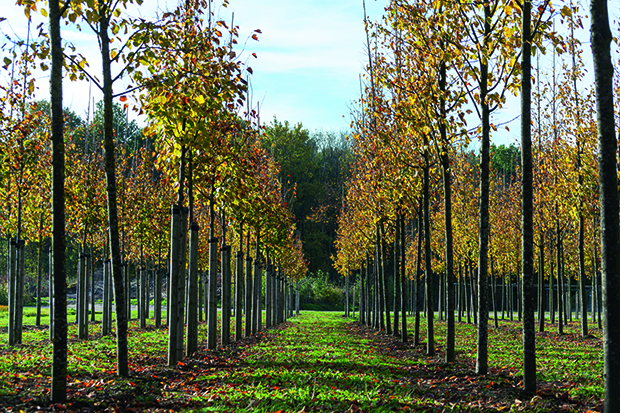
Grey alder in rows.
DECIDUOUS HEDGES
People select deciduous hedges mainly because they provide variable wind cover. Their dense growth protects crops during the summer and into the autumn. In winter the bare framework continues to slow wind but it also means the hedge doesn’t get blown over by strong storms. It also maximises winter sunlight for grass growth.
Many deciduous trees can be pruned into hedges, including oaks, beech and birch. But by far the best trees for windbreak hedges are deciduous alder. On a block like mine, these adaptable trees are a godsend. They’re available in bulk as bare-rooted stock for planting in winter, which makes them very cost-effective.
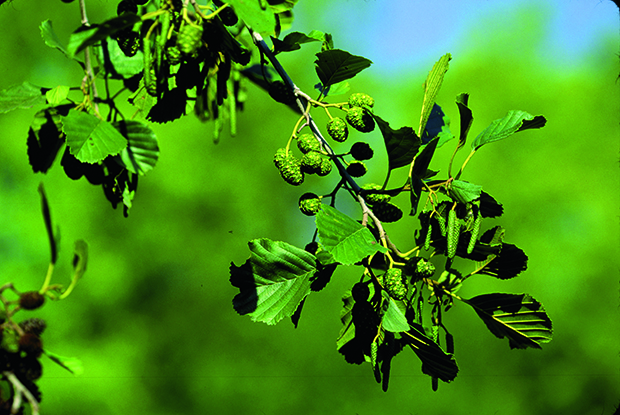
Black alder leaves.
If you have the time, you can grow alders yourself from seed, as we did. We grow a range of alder species including black (Alnus glutinosa), grey (A. incana), red (A. rubra) and Italian (A. cordata). My favourite is Corcian alder (A. alnobetula subsp. suaveolens). It’s slower growing, but it forms a thin hedge that doesn’t require as much trimming.
Alders are self-healing, which means if stock, wind or bad pruning damages your hedge, it will generally regrow. Importantly, the tree will reestablish at the base where many other trees will not. Alders will grow in a wide range of soil with different moisture levels, even in areas that become waterlogged.
One of the best features of an alder hedge is that it fixes nitrogen into the soil. The roots form a gall that provides a home for beneficial bacteria that take in nitrogen from the air and fix it to the soil. Our hedges mean we have a very high nitrate level without applying nitrogen fertilisers, which can wash out and pollute waterways. Along with the nitrogen, the leaves and mulched prunings help build soil health and increase earthworm numbers.
EVERGREEN HEDGES
Mexican alder (A. jorullensis) is an evergreen tree that grows faster than the deciduous varieties. This means as a hedge it needs trimming twice a year. However, bees love Mexican alder and it’s usually full of buzzing when in flower. Macrocarpa is a popular, large, evergreen farm hedge and has its uses as a boundary hedge in windy coastal locations. However, it can get very thick and doesn’t self-heal like an alder.
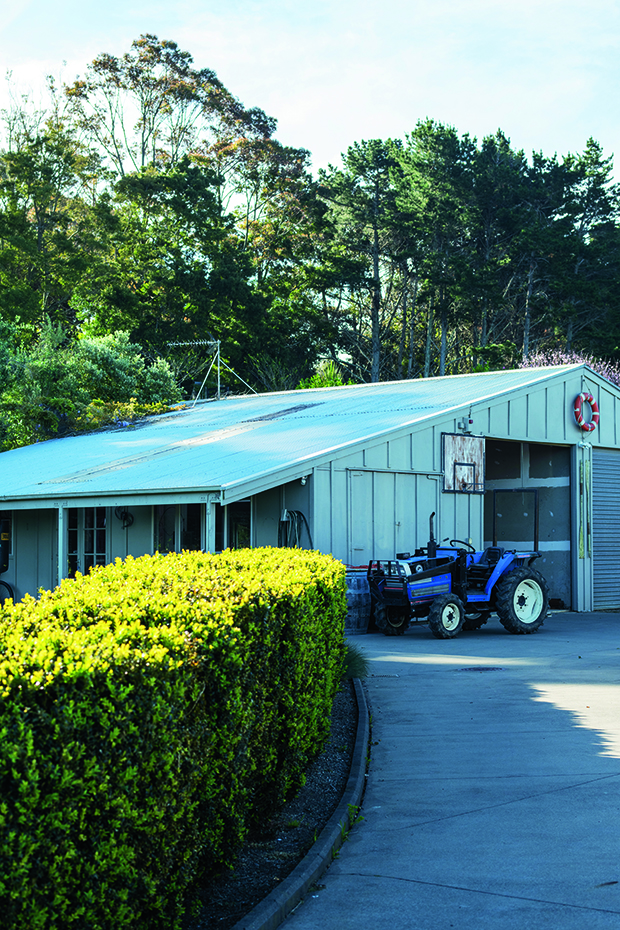
EDIBLE HEDGES
Feijoa trees, of course, make wonderful hedges. While stock will munch both the leaves and fruit, the trees should be able to survive the assault. They also only need a trim once every year or so.
Macadamia is another tree that makes a fine evergreen windbreak. The leaves have sharp edges that prevent some grazing and also make for a useful roadside or orchard boundary barrier to deter trespassers.
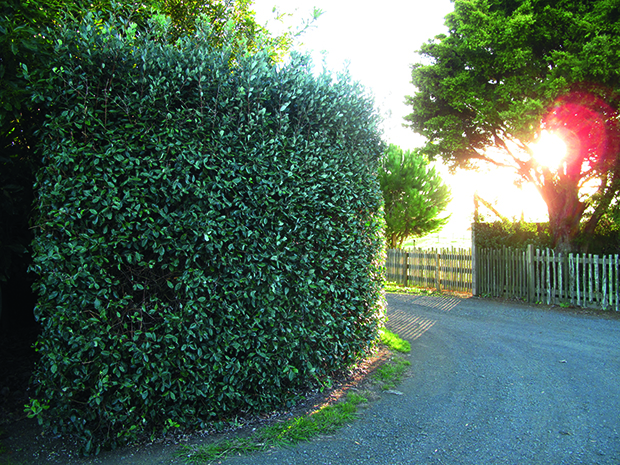
Hedging hazels is a great way to encourage pollination and use their suckers – vigorous vertical growth coming from the roots or lower main stem. However, if you want nuts, you will need to ensure you plant the right mix of pollinators in your rows.
Quince (Cydonia oblonga) is another tree that can grow vigorous suckers, which allows you to create a good hedge. You can use either the larger fruiting quince or the smaller japonica (Chaenomeles japonica).
These produce beautiful flowers and fragrant fruit suitable for jellies and conserves.
However, hedges don’t need to consist of a single species. You can mix up fruiting and nut trees; handy if you want to grow elderflower, which is more of a lax shrub and needs support from neighbouring trees. Once established, the flowers make great wine or cordial.
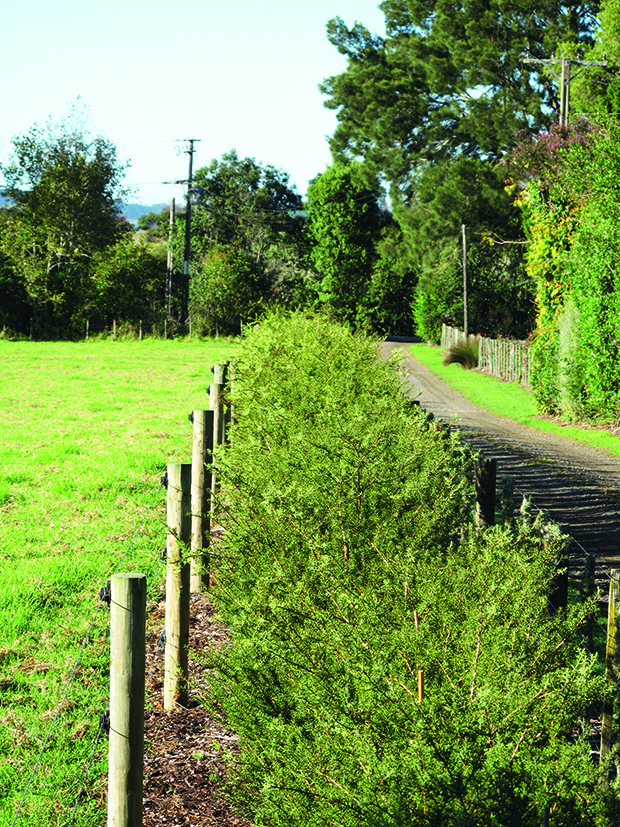
Natives such as tōtara make excellent windbreak hedges.
NATIVE HEDGES
Natives such as pōhutukawa and tōtara can make excellent windbreak hedges.
However, I would not recommend using natives such as pittosporum, coprosma or griselinia. These are fine for in town, but I’ve found them unsuitable for farms or orchards as they are too short-lived. In the wild most of these trees grow in more open areas and allow longer-term forest trees to outgrow them. This limits their lifespans to about 20 years or so.
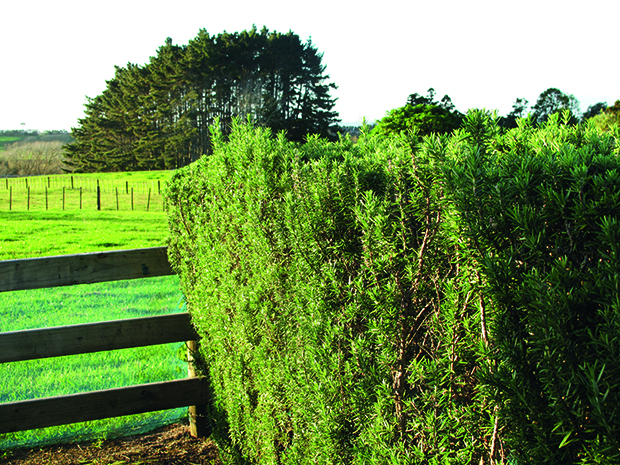
TREES FOR BIRDS AND BEES
Native birds generally like native trees. Some prefer trees that produce berries, while others are nectar lovers, and many like to strip off tender leaves. Kererū, for instance, love kōwhai and houhere. The most popular native berry trees we grow are puriri, tawa, and tītoki.
Mānuka has become a popular tree to grow in the honey industry. However, its short flowering season means you need to grow other trees to sustain bees. Rewarewa is another desirable native used to extend the honey season. Both kōwhai and kākābeak are popular with bees, especially bumble bees.
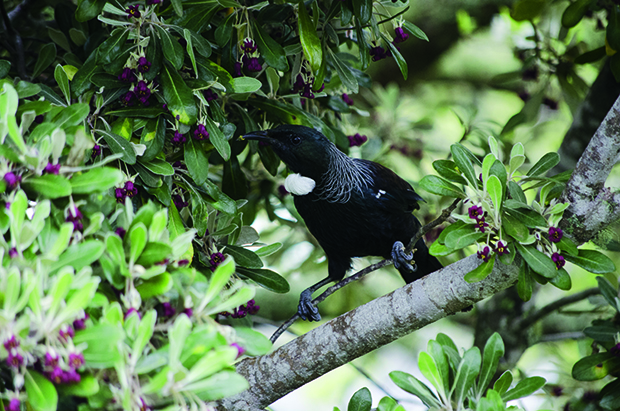
A number of trees are wind-pollinated, including most nut trees. Macadamia, however, are bee-pollinated and their long strands of tiny orchid-like flowers give off a heady honey scent.
Alders are ideal food sources for bees. The Trees for Bees Research Trust identified four species of alder (Alnus nitida, A. formosana, A. nepalensis and A. maritima) that flower in autumn, providing an abundance of pollen to strengthen bee colonies for wintertime.
HEL’S TIPS FOR THE BEST TIMBER TREES
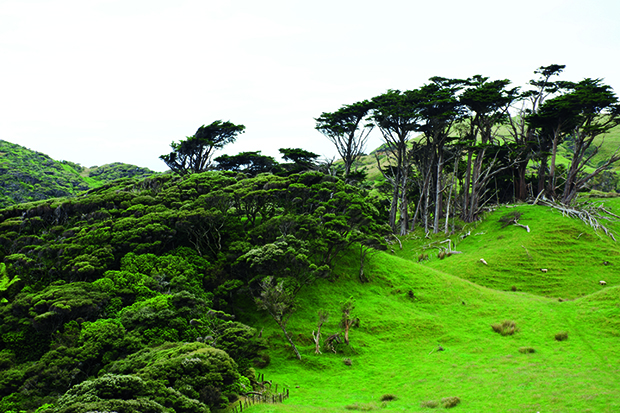
Looking out across a Macrocarpa Grove on New Zealand farmland. An idyllic and iconic farm view.
Pine (Pinus radiata) is a common hedging tree in New Zealand and is a popular choice for timber. However, on smallholdings, it’s often not efficient to grow pine; it can be tough to clear-fell en masse without disturbing other trees. It’s wise to ensure you maintain access routes that give enough space to bring in logging trucks or to set up a portable mill. Pine is dominant in New Zealand because it has a
25-30-year turnaround from planting to harvest. But the other trees that can grow just as fast and provide a similar return: red alder (Alnus rubra) and some forms of poplar (Populus yunnanensis, P. deltoids). Macrocarpa and lusitanica are highly regarded timber trees. For those growers with a more long-term plan, selected natives can be sustainably grown for furniture timber.
Love this story? Subscribe now!
 This article first appeared in NZ Lifestyle Block Magazine.
This article first appeared in NZ Lifestyle Block Magazine.
